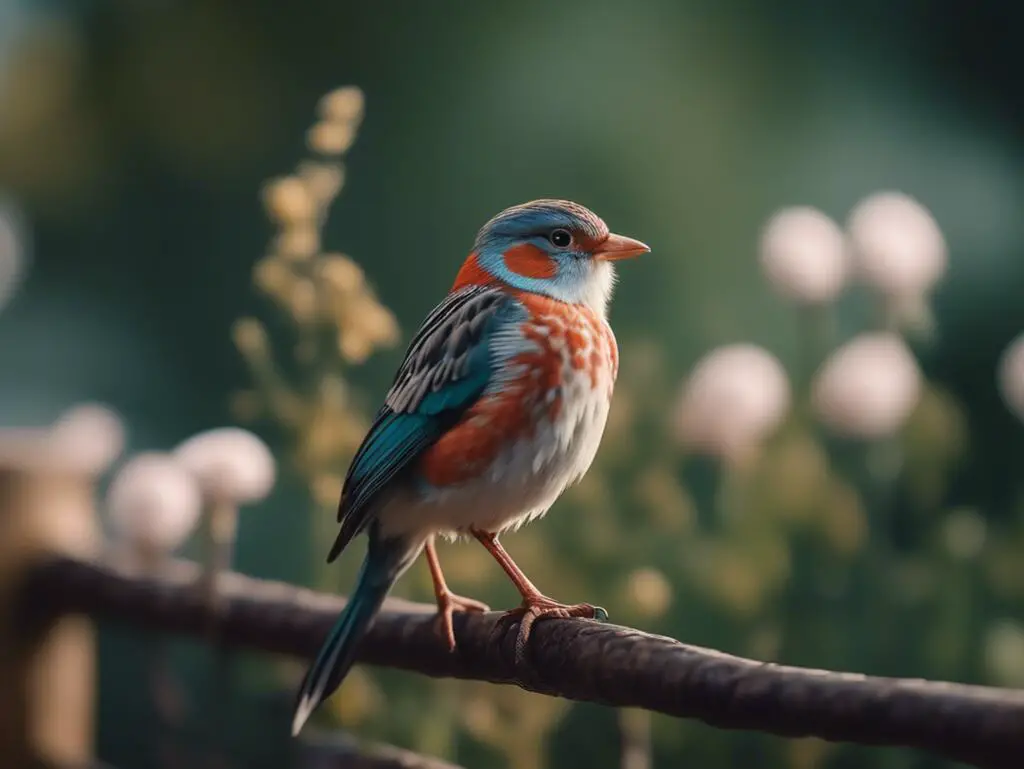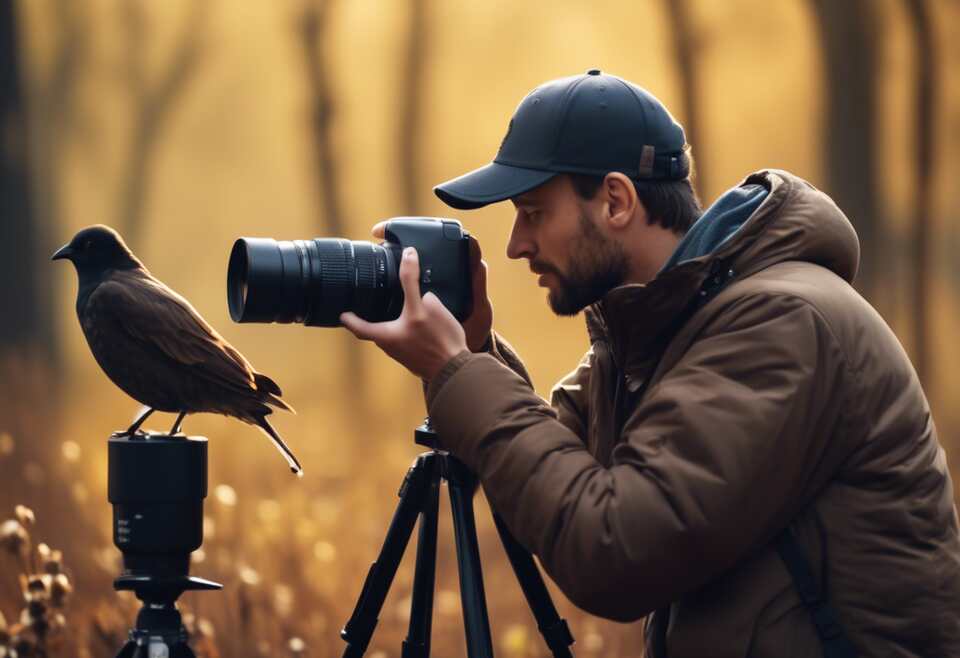Photographing birds can be a rewarding and challenging experience for beginners looking to explore wildlife photography. Capturing these beautiful creatures in their natural habitats requires patience, skill, and some essential tips to enhance your bird photography skills. Here are some of the best bird photography tips for beginners.
Table of Contents
Best Bird Photography Tips for Beginners
Understanding Your Gear
When starting with bird photography, it’s crucial to understand your gear, especially your camera and lenses. Invest in a telephoto lens with a focal length of at least 300mm to get those close-up shots of birds without disturbing them. Take the time to learn about your camera settings, such as aperture, shutter speed, and ISO, to capture sharp and well-exposed images.
Research and Patience
Bird photography requires a good deal of research and patience. Spend time studying the behavior of different bird species, their habitats, and the best times to find them. Visit local parks, nature reserves, or bird sanctuaries to observe and capture birds in their natural environment. Remember, patience is key – be prepared to wait for the perfect shot.
Composition and Background
Pay attention to the composition of your bird photographs. Use the rule of thirds to create visually appealing images. Position the bird off-center to add interest to the shot. Be mindful of the background to avoid distractions that could take the focus away from the bird. A clean and uncluttered background will make your subject stand out.
Natural Light and Timing
Lighting plays a crucial role in bird photography. For bird photography, the soft, warm light of early morning or late afternoon is ideal for capturing stunning images. Avoid shooting in harsh midday sun as it can create harsh shadows and blown-out highlights. Experiment with different lighting conditions to see how they affect your photos.
Get Eye-Level with Birds
To create engaging and intimate bird photos, try to get down to eye level with your subjects. This perspective will offer a more natural view of the birds and establish a connection between the viewer and the subject. Use a tripod or a bean bag to stabilize your camera at ground level for eye-level shots.
Practice and Learn from Mistakes
Like any skill, bird photography takes practice to master. Don’t be discouraged by initial failures or missed shots. Use them as learning opportunities to improve your skills. Experiment with different techniques, settings, and compositions. Review your images critically to understand what works and what doesn’t.
Respect Wildlife and Environment
As a bird photographer, it’s essential to respect wildlife and the environment. Avoid disturbing birds in their natural habitats. Keep a safe distance to prevent stressing the birds or causing them to flee. Follow ethical guidelines for bird photography and prioritize the well-being of the birds above getting the perfect shot.
Bird photography can be a fulfilling and exciting endeavor for beginners willing to learn and practice. By following these bird photography tips, you can enhance your skills and capture stunning images of these beautiful creatures in the wild. Remember to stay patient, respect nature, and enjoy the process of capturing the beauty of birds through your lens.
Advanced Techniques for Capturing Stunning Bird Images
Bird photography is a captivating and challenging form of photography that requires patience, skill, and the right techniques to capture stunning images of our feathered friends. Whether you are a beginner or a seasoned bird photographer looking to elevate your craft, incorporating advanced techniques can help you take your bird photography to the next level.
Understanding Bird Behavior and Habitats
To capture striking bird images, it’s essential to understand the behavior and habitats of the birds you want to photograph. Researching their behavior, feeding patterns, and preferred habitats can help you anticipate their movements and get the perfect shot. Visit birding hotspots or local parks where you are likely to find a variety of bird species to expand your photography opportunities.
Use the Right Equipment
Having the right equipment is crucial for bird photography. Invest in a quality DSLR or mirrorless camera with a telephoto lens to get close-up shots of birds without disturbing them. A focal length of at least 300mm is recommended for capturing detailed bird images from a distance. Consider using a sturdy tripod or monopod to ensure stability and reduce camera shake, especially when using longer lenses.
Mastering the Art of Patience
Patience is key in bird photography. Birds are unpredictable subjects that require time and observation to photograph successfully. Set up your equipment, choose a good vantage point, and wait for the birds to come into view. Avoid making sudden movements or loud noises that could startle the birds and cause them to fly away. Remember, the best shots often come to those who wait.
Utilize Natural Light
Lighting plays a significant role in photography, and bird photography is no exception. The best time to capture stunning bird images is during the golden hours of sunrise and sunset when the light is soft and warm, creating a beautiful glow on the birds. Avoid harsh midday sunlight, as it can create shadows and overexposed images. Experiment with backlighting and sidelighting to add dimension and drama to your bird photographs.
Focus on Composition
Composition is crucial in bird photography to create visually appealing images. Use the rule of thirds to place the bird off-center for a more dynamic composition. Pay attention to the background to ensure it does not distract from the main subject. Consider the bird’s pose, the direction of its gaze, and any unique behaviors to capture intriguing and storytelling images that stand out.
Post-Processing and Editing
Post-processing is a valuable tool in enhancing your bird images. Use editing software like Lightroom or Photoshop to adjust exposure, contrast, sharpness, and colors to make your photos pop. Be careful not to over-process your images, as natural-looking photos are often more appealing. Experiment with different editing techniques to find a style that complements your bird photography.
By incorporating these advanced techniques into your bird photography workflow, you can elevate your skills and capture stunning images that showcase the beauty and grace of our avian friends. Remember to practice, experiment, and most importantly, enjoy the process of capturing the mesmerizing world of birdlife through your lens.
Conclusion
The best bird photography tips for beginners and advanced techniques for capturing stunning bird images can truly elevate your bird photography game. By starting with the basics like understanding your equipment, mastering your camera settings, getting to know your subject, and practicing patience, beginners can build a strong foundation for capturing beautiful bird photos.
As you progress on your photography journey, experimenting with advanced techniques such as using different lighting conditions, trying out various compositions, focusing on the bird’s eyes, employing creative post-processing methods, and practicing ethical photography habits will help you refine your skills and produce truly stunning bird images.
Remember, bird photography is not just about technical skills; it’s also about storytelling. Each bird photo you capture has a story to tell, whether it’s about the bird’s behavior, its natural habitat, or its interaction with other species. By focusing on capturing these moments and emotions in your bird images, you can create photographs that not only showcase the beauty of birds but also evoke feelings and connect with your audience on a deeper level.
So, grab your camera, head outdoors, and explore the wonderful world of bird photography. With dedication, practice, and a keen eye for detail, you can capture breathtaking bird images that not only reflect the beauty of the avian world but also showcase your unique perspective as a photographer. Embrace the challenges, celebrate the victories, and keep honing your craft.
The more you immerse yourself in the art of bird photography, the more rewarding and fulfilling your photography journey will be. Happy shooting!



